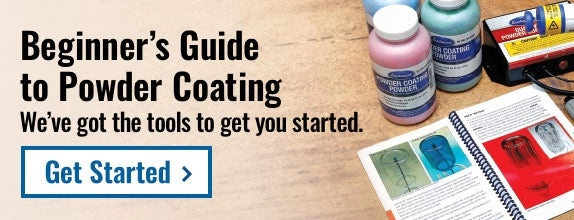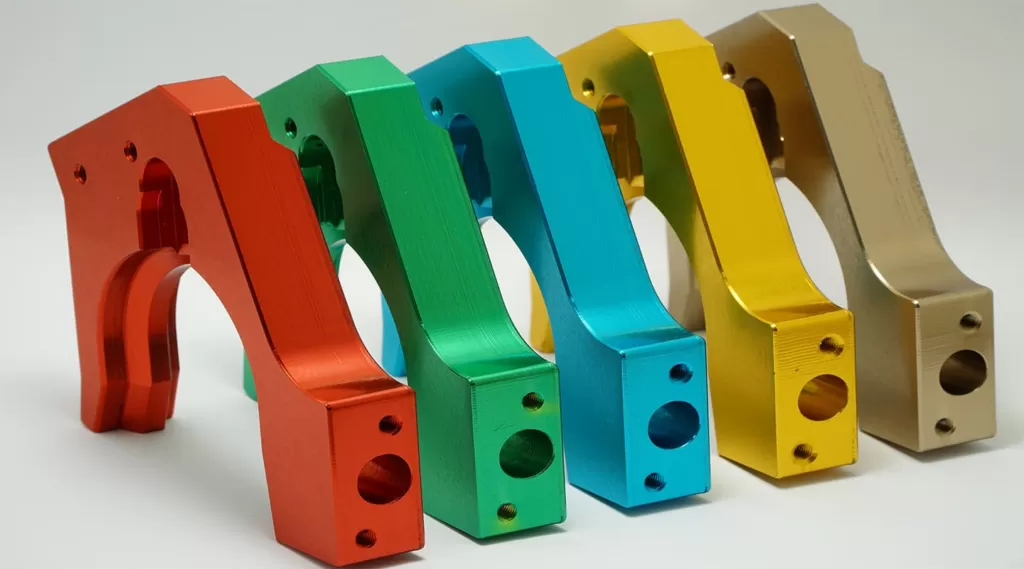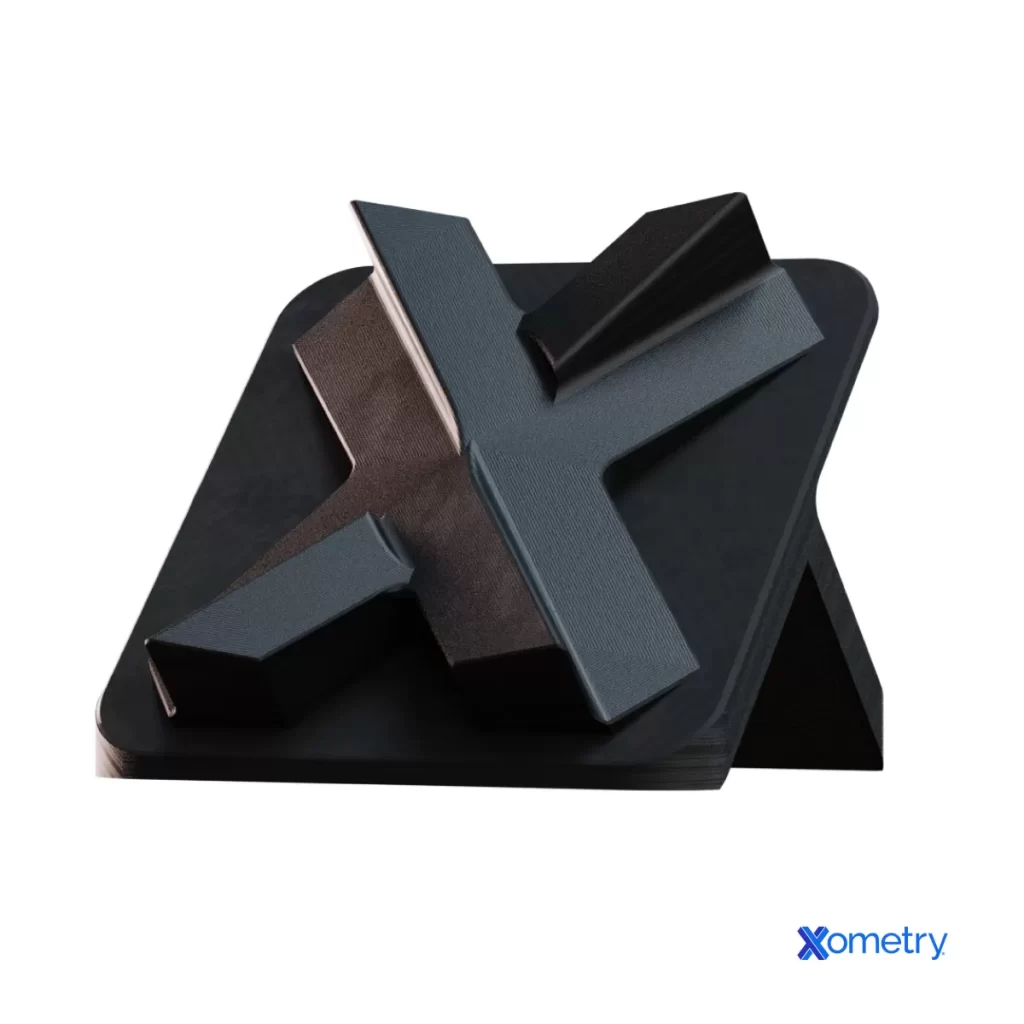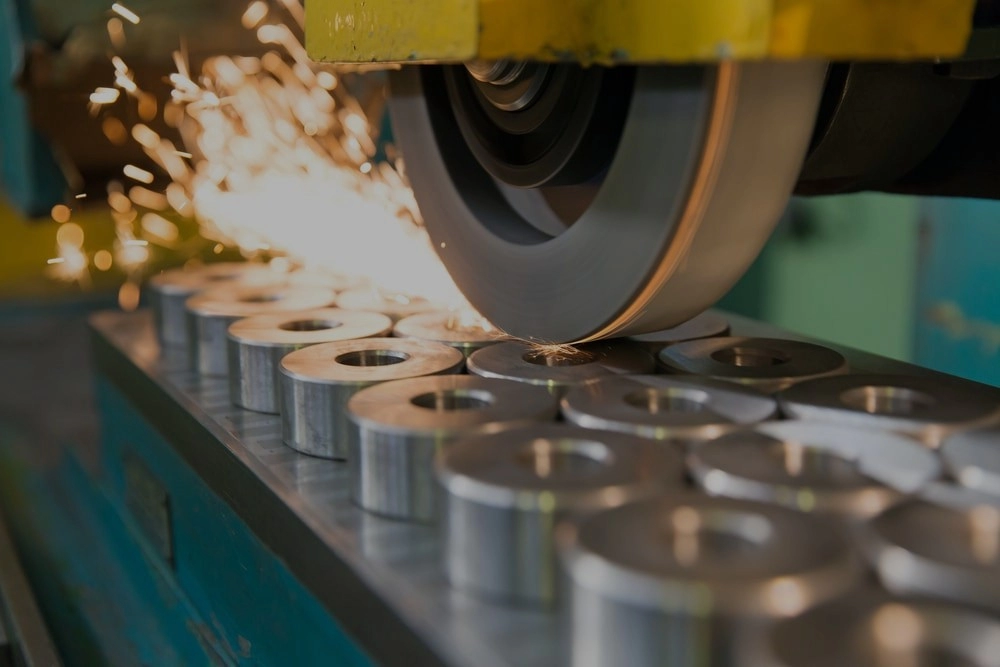Understanding Powder Coating and What Makes It Unique
If you’re looking for a durable coating for CNC parts, powder coating is a standout choice. Unlike traditional wet paint, powder coating uses finely ground particles that are applied electrostatically and then cured under heat. This creates a tough, even finish that resists chipping, scratching, and fading—perfect for CNC machined components that need high-performance surface finishes.
What Makes Powder Coating Unique
- Electrostatic spray deposition is the heart of the powder coating process. The powder particles carry an electric charge that helps them stick uniformly to metal surfaces.
- Once applied, the powder is heated to a curing temperature where it melts, flows, and solidifies into a continuous film that is far more durable than typical paint.
- Powder coatings avoid solvents and liquid carriers, making them a greener option without compromising performance.
- The resulting coating combines excellent corrosion resistance, chemical resistance, and UV protection to extend the life of your CNC parts.
Types of Powder Coatings
Understanding the types helps you pick the right coating for your CNC machining project:
- Thermoset powder coatings are the most common. When heated, they undergo a chemical reaction that crosslinks the polymers, creating a resilient and permanent finish. They cannot be remelted after curing.
- Thermoplastic powder coatings melt when heated and solidify on cooling but don’t chemically change. This makes them easier to repair or recycle but less resistant than thermosets in some cases.
- Popular powder coatings include epoxy, polyester, polyurethane, and hybrid blends—each designed for specific applications and environmental conditions.
Key Components of Powder Coating
Powder coating is made from:
- Resins which form the structural base of the coating film.
- Curing agents that help the powder harden during the heat cure step.
- Pigments and additives provide color, texture, and performance enhancements like UV stability or anti-corrosion.
- Because the powder is solid, it eliminates issues like solvent evaporation and paint thinning, making it ideal for uniform, high-quality finishes on CNC machined metal parts.
Learning the basics of powder coating provides a solid foundation to choose the best surface finishing method for your CNC projects. To dive deeper into related metal finishing techniques and surface prep, check out our guide to surface roughness and compare how powder coating stands out against anodizing in our detailed article Is Powder Coating Better Than Anodizing.
The Powder Coating Process Step-by-Step
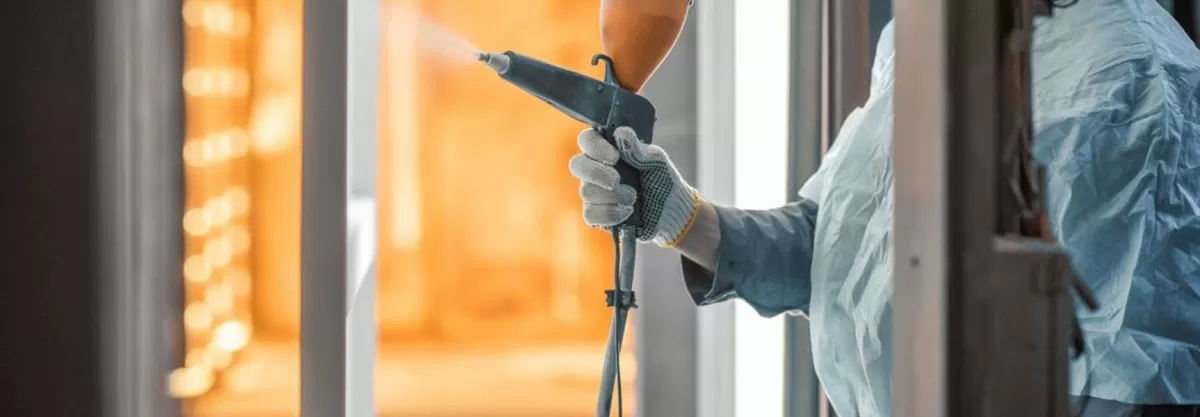
Getting a durable coating for CNC parts starts with understanding the powder coating process. Here’s a clear, simple breakdown of each stage, from prepping the surface to final quality checks.
Surface Preparation
Before any powder hits your CNC parts, surface preparation is crucial. This step removes dirt, oils, and rust, ensuring the coating sticks well.
- Cleaning: Often done by degreasing or washing parts to clear oils and dust.
- Abrading: Light sanding or blasting to roughen smooth surfaces, helping the powder bond better.
- Drying: Parts must be dry and free of moisture to avoid defects.
The better the surface prep, the longer your powder coating will last.
Application Methods
Next up is applying the powder coating using electrostatic spray deposition, one of the most common ways.
- The powder is sprayed onto the part using a charged gun.
- The electric charge attracts the powder to the metal surface, making the coating stick evenly.
- Excess powder is collected and reused to minimize waste.
Other methods like fluidized bed or dipping are options but less common in CNC powder coating.
Curing Process
After application, the coated parts go into an oven for curing. This step is what makes the coating hard and durable.
- The heat causes the powder to melt and flow over the surface.
- It chemically bonds to create a tough finish.
- Typical curing temps range between 325°F and 400°F for about 10-20 minutes.
Proper curing ensures the coating’s strength, color, and texture hold up under use.
Quality Control and Testing
Finally, every part undergoes testing to ensure the powder coating meets the mark.
- Visual inspections check for even coverage and color consistency.
- Adhesion tests verify the coating sticks well and won’t peel.
- Thickness gauges measure the coating to meet required specs.
This step is essential for preventing failures after the parts reach you.
By following these steps, powder coating provides a high-quality surface finish that’s tough, attractive, and long-lasting—ideal for CNC machined parts used in demanding US industries.
Benefits of Powder Coating for CNC Parts
Powder coating offers several key advantages for CNC machined parts, making it a popular choice across many industries. Whether you’re in automotive, aerospace, or manufacturing, this durable finish brings a lot to the table.
Durability and Protection
One of the biggest benefits is exceptional durability. Powder coating creates a tough, protective layer that resists chipping, scratching, and fading far better than traditional paint. This means your CNC parts stand up to wear and tear, corrosion, and harsh environmental conditions. It’s an ideal metal finishing technique to ensure longevity and reliable performance.
Aesthetic Versatility
Powder coating is highly versatile when it comes to looks. You can get a wide range of colors and textures—from smooth, glossy finishes to matte or textured surfaces. This versatility helps CNC parts meet both functional needs and aesthetic preferences without extra costs. Plus, the finish stays vibrant over time, maintaining a professional appearance.
Cost Effectiveness and Efficiency
Compared to liquid paints, powder coating is more cost-effective and efficient. The powder coating process uses fewer materials and wastes less. Overspray can be recycled, which cuts down on waste. Additionally, powder coating usually requires fewer coats and doesn’t need solvents, saving time and money in production. This makes it a smart choice for CNC parts production, especially when scale and quality both matter.
Environmental Advantages
Finally, powder coating stands out as an eco-friendly coating solution. It doesn’t emit harmful volatile organic compounds (VOCs) like traditional paints. The reduction in hazardous waste and emissions helps CNC businesses comply with environmental regulations and supports sustainability goals. Choosing powder coating means protecting your parts and the planet simultaneously.
By combining durability, style, cost efficiency, and environmental benefits, powder coating is a powerful finish for CNC parts that meets the practical needs of U.S. manufacturers and end users alike.
Applications of Powder Coating in CNC Machining
Powder coating is a popular choice across various industries that rely on CNC machining. Whether you’re working with metal parts or custom components, powder coating offers a reliable surface finish that stands up to tough conditions.
Common Industries Using CNC Powder Coating
- Automotive: Enhances the durability of engine parts, chassis components, and accessories with a corrosion-resistant finish.
- Aerospace: Provides lightweight, long-lasting coatings that protect sensitive machined parts against wear and environmental damage.
- Industrial Equipment: Offers heavy-duty protection to machinery parts that face constant wear and tear.
- Medical Devices: Ensures smooth, non-toxic finishes on surgical tools and equipment that need frequent sterilization.
- Construction: Protects steel frames and fabricated parts from weather and rust.
- Consumer Electronics: Adds aesthetic appeal and protection to metal casings and casings of gadgets.
Why Choose Powder Coating for CNC Parts
Durability and Protection
Powder coating creates a tough, even layer that resists chipping, scratching, fading, and corrosion. This makes it ideal for CNC parts exposed to harsh environments or frequent handling.
Enhanced Surface Finish
Unlike traditional painting, powder coating delivers a smooth, uniform finish with excellent adhesion. This improves the appearance and performance of your parts.
Cost-Effective and Efficient
Thanks to the electrostatic spray deposition and fast curing process, powder coating reduces material waste and speeds up production – a real win for businesses needing quick turnaround times.
Environmentally Friendly
Many powder coatings are eco-friendly, containing no solvents and releasing negligible volatile organic compounds (VOCs). This aligns well with growing sustainability goals in manufacturing.
When you combine the strength and versatility of powder coating with the precision of CNC machining, you get parts that look better, last longer, and perform reliably over time. That’s why so many industries trust powder coating for their CNC-produced components.
Tips for Successful Powder Coating CNC Parts
Getting the best results from CNC powder coating means paying attention to a few key points. Here’s how to make sure your coating job is smooth, durable, and looks great.
Choose the Right Powder Coating Type
- Know your material: Different powder coatings work better on certain metals and surfaces. For example, thermoset coatings are great for high heat resistance, while thermoplastic coatings offer flexibility.
- Match the coating to the environment: If your CNC parts will face outdoor use, pick a coating with strong weather and corrosion resistance.
- Consider finish and color: Powder coatings come in many finishes (matte, gloss, textured). Choose one that fits your part’s look and function.
Partner with a Professional Powder Coating Service
- Expertise matters: Experienced services understand the powder coating process inside out, from surface preparation to curing.
- Proper equipment: Professionals use quality electrostatic spray deposition tools to apply the coating evenly.
- Consistent quality control: Reliable providers test the coating strength and adhesion to avoid peeling or chipping.
Avoid Common Powder Coating Mistakes
- Poor surface prep: Cleanliness is key. Dirt, oil, or rust will lead to weak adhesion and coating failure.
- Wrong curing temperature or time: Baking the coating too little or too long can weaken the finish.
- Overloading powder: Too thick a layer causes rough surfaces and poor durability.
- Skipping test runs: Always test coating combos on sample parts before full production to catch issues early.
Following these tips keeps your CNC parts’ powder coating durable and visually appealing, saving time and money in the long run.
How HYCNC Enhances Your Powder Coating Experience
When it comes to CNC powder coating, having a partner that covers both precise machining and quality finishing makes all the difference. At HYCNC, we offer comprehensive CNC and powder coating services designed to meet the specific needs of US customers looking for durable, efficient, and visually appealing parts.
Comprehensive CNC and Powder Coating Services
- Precision CNC Machining: We start with exact CNC machining tailored to your design specifications, ensuring every part is ready for finishing.
- Expert Surface Preparation: Proper surface prep is crucial for a lasting powder coating. We handle all cleaning, sanding, and priming so coatings adhere perfectly.
- Advanced Powder Coating Application: Using the latest electrostatic spray deposition methods, we apply powder coating evenly, resulting in a strong, smooth finish.
- Curing with Quality Control: Our curing process guarantees your parts get a hard, durable finish. Each batch undergoes testing to ensure it meets industry standards.
Why Choose HYCNC for Your Powder Coating Needs
- Single Source Convenience: Combining CNC machining and coating under one roof saves you time and hassle. This integrated approach means better coordination and faster turnaround.
- Tailored Solutions: We help you choose the right coating type, whether thermoset or thermoplastic, to match your parts’ intended use.
- Eco-Friendly Practices: Our powder coating solutions minimize waste and environmental impact, aligning with growing sustainability goals in the US.
- Experienced Team: With years of industry know-how, we deliver consistent performance, trusted by businesses across multiple industries.
Get Started with HYCNC Today
Ready to enhance your parts with durable coating for CNC parts that stand up to the toughest conditions? Contact HYCNC for a free consultation and see how our expert CNC machining and powder coating services can boost your project’s quality and efficiency.
Reach out now and experience the difference HYCNC makes in powder coating.
FAQs About Powder Coating and CNC Powder Coating
What is powder coating and how does it differ from traditional painting
Powder coating is a dry finishing process where powdered paint is applied using electrostatic spray deposition, then cured to form a durable, protective layer. Unlike liquid paint, it creates a thicker, tougher coating without runs or drips.
What types of powder coatings are best for CNC parts
Thermoset powders are the most popular choice for CNC parts due to their excellent durability and chemical resistance. Thermoplastic powders can be used too but may not provide the same heat resistance or hardness.
How important is surface preparation for powder coating
Surface prep is critical. Cleaning, sanding, or blasting the metal removes oils, rust, and debris, ensuring better powder adhesion and a smooth finish. Skipping this step often leads to poor results.
Can powder coating be applied to all metals used in CNC machining
Yes, powder coating works well on most metals including aluminum, steel, and stainless steel, commonly used in CNC parts. Each metal may require a slightly different surface prep method.
How long does the powder coating process take from start to finish
Generally, the entire process takes a few hours:
- Surface prep: 30–60 minutes
- Application: 10–20 minutes
- Curing: 10–30 minutes depending on part size and powder type
What are the main benefits of powder coating for CNC machined parts
- Durability: Resists chipping, scratching, and corrosion
- Aesthetic options: Wide range of colors and textures
- Efficient and cost-effective: Less waste, quicker application
- Eco-friendly: No solvents or VOC emissions
Can powder coating be repaired if chipped or damaged
Minor chips can often be touched up with liquid paint, but major damage usually requires stripping and re-coating. Regular maintenance helps extend the coating life.
Why should I choose a professional powder coating service for my CNC parts
Professional services have the right equipment and experience to ensure proper surface preparation, correct powder application, and precise curing. This delivers a better final finish and longer-lasting protection.
How does HYCNC enhance the powder coating experience for customers
At HYCNC, we combine expert CNC machining with top-tier powder coating services, offering:
- Customized surface finishing tailored to your parts
- Fast turnaround and reliable quality control
- Expert advice on selecting the right coating for your application
Is powder coating an eco-friendly finishing option
Yes, powder coating is considered an environmentally responsible metal finishing technique. It produces no hazardous VOCs, reduces waste, and the overspray powder can often be recycled.
If you have more questions or need help with CNC powder coating, feel free to reach out to us at HYCNC!

